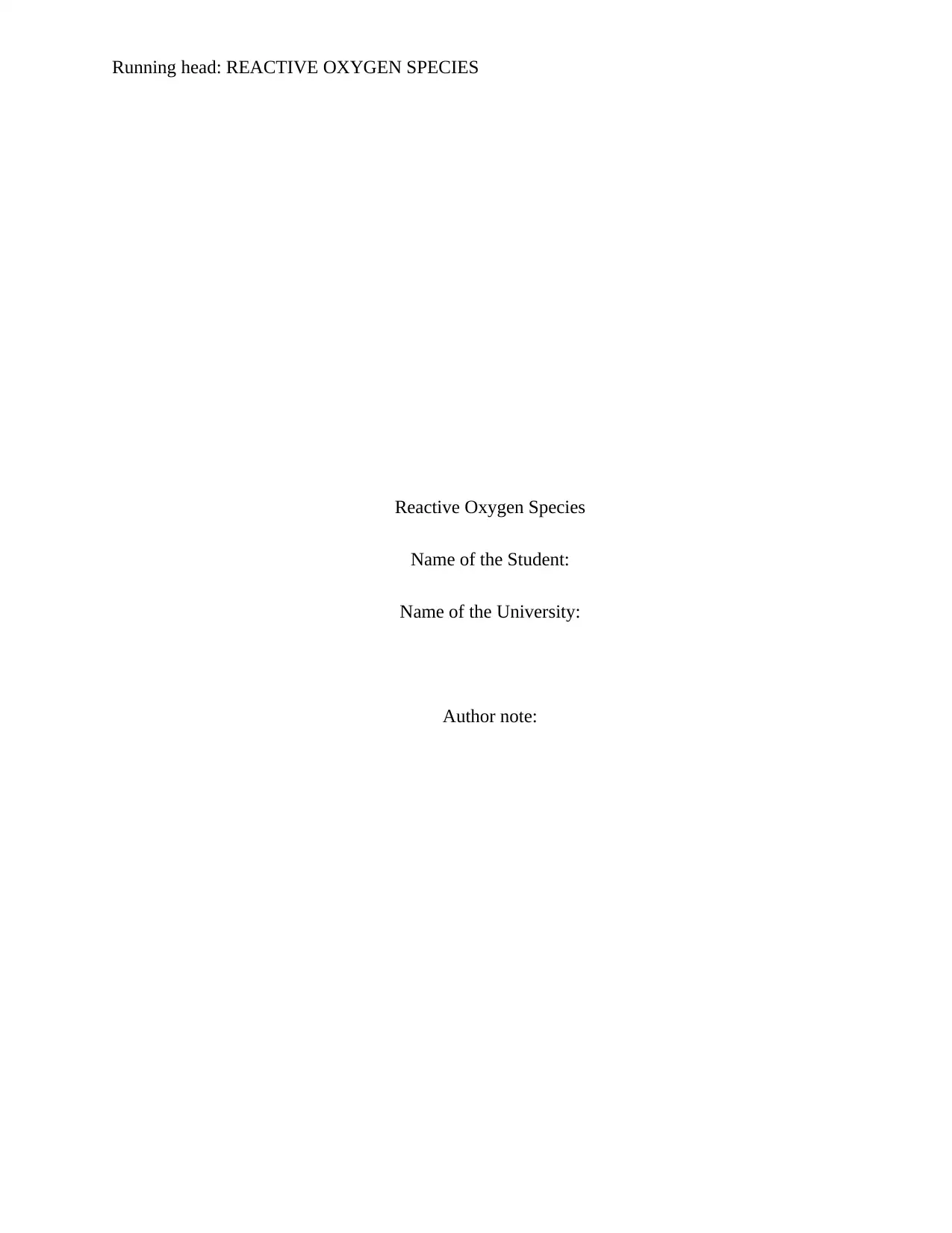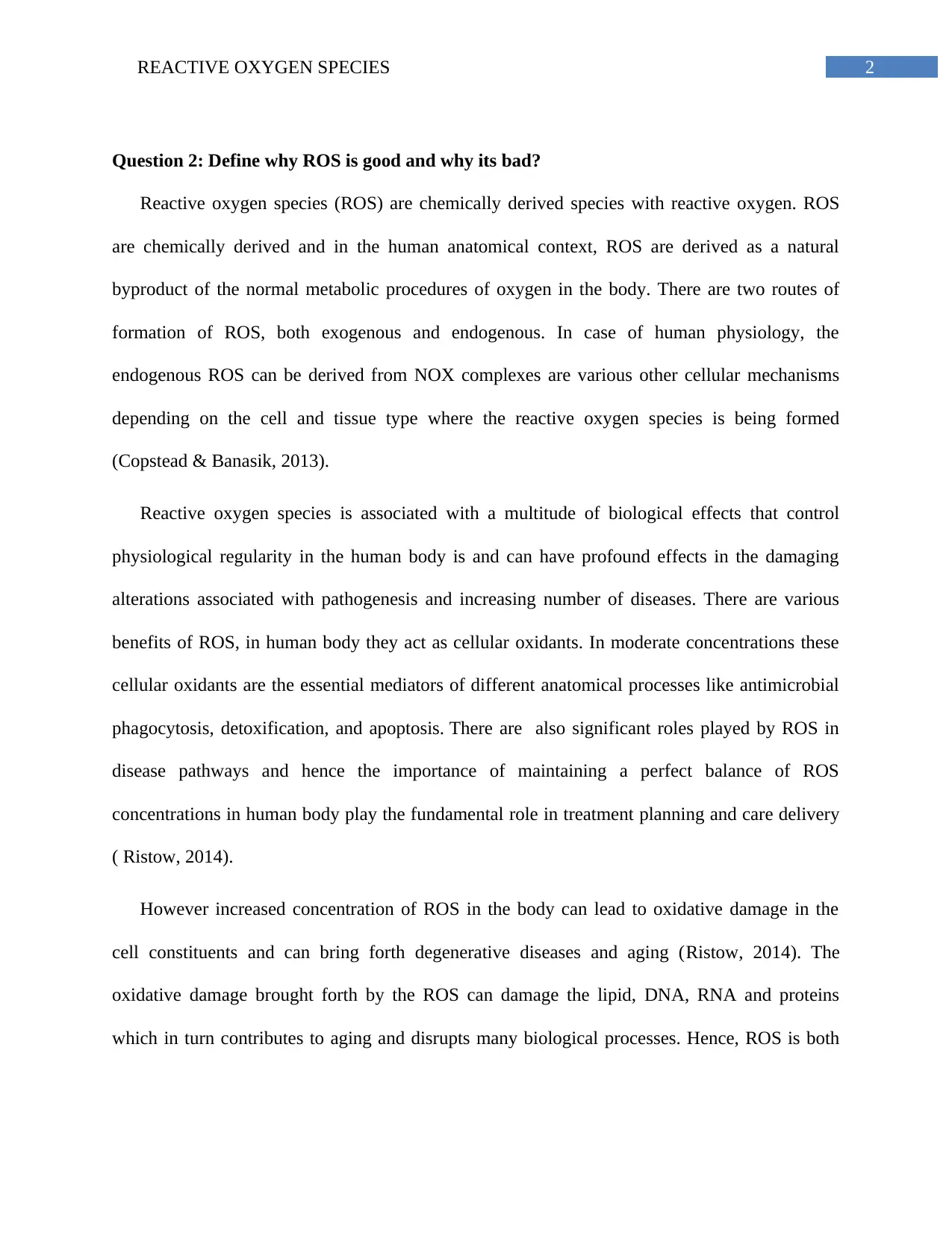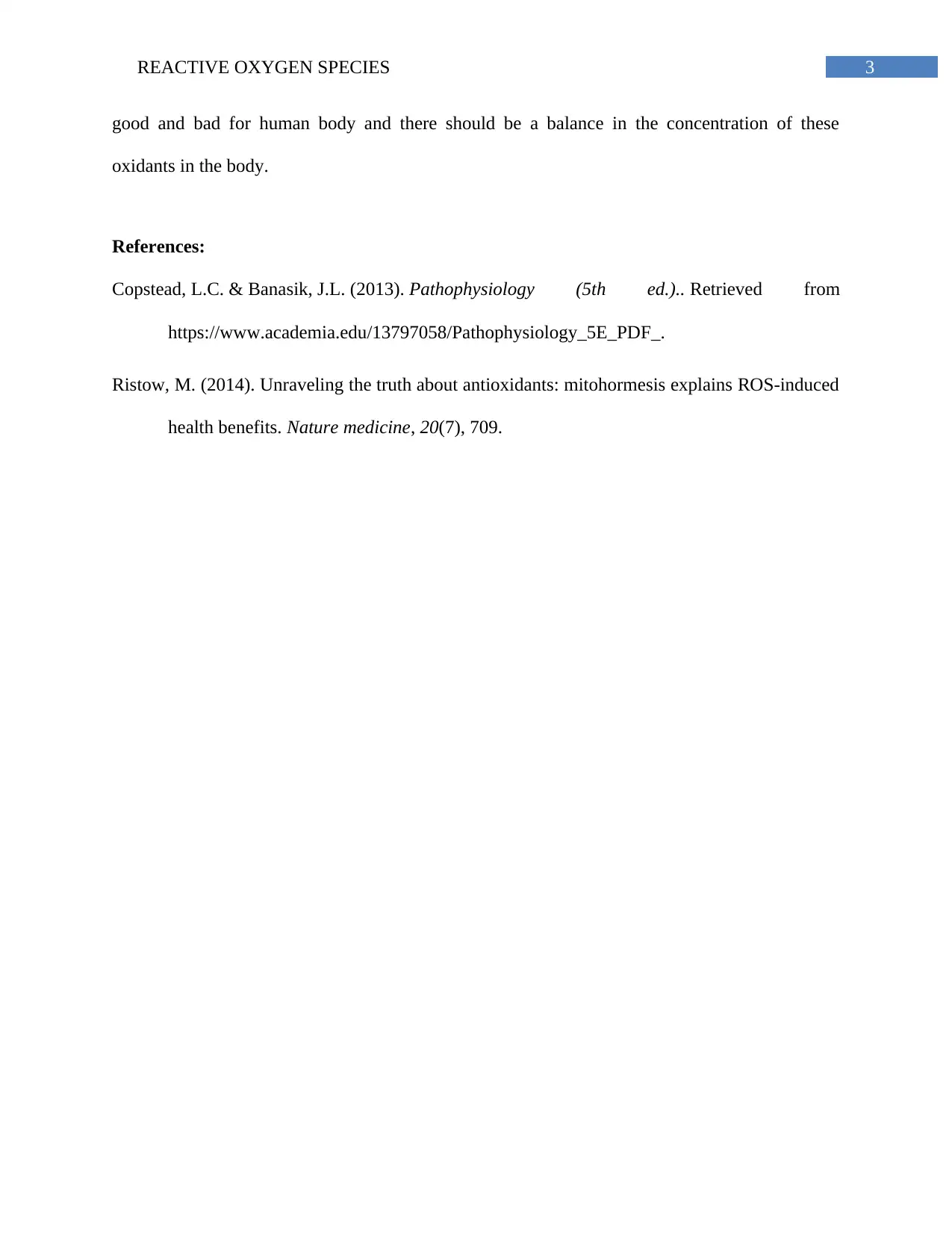Reactive Oxygen Species: Benefits and Risks in Human Body
VerifiedAdded on 2021/04/16
|4
|412
|41
Homework Assignment
AI Summary
This assignment focuses on Reactive Oxygen Species (ROS), examining their role in human physiology. The assignment explores the dual nature of ROS, discussing their benefits as cellular oxidants involved in processes like antimicrobial phagocytosis and detoxification, while also highlighting the risks associated with elevated levels, such as oxidative damage leading to degenerative diseases and aging. The solution references scholarly articles to support the discussion. The assignment emphasizes the importance of maintaining a balance of ROS concentrations for optimal health and disease prevention. The assignment explores the impact of ROS on the body and how the balance of these oxidants is important for the human body.
1 out of 4








![[object Object]](/_next/static/media/star-bottom.7253800d.svg)